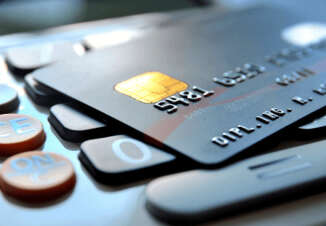The content on this page is accurate as of the posting date; however, some of the offers mentioned may have expired.

APR stands for “annual percentage rate.” That itself is a figure which your credit card issuer uses to calculate the cost of your credit. It’s a yearly payment; lenders are dictated by law to disclose it to their customers upon signing up for the card. That was put forth in 1960 by the “Truth in Lending Act.” In 1980 however, it was adjusted and is now known as another part of the “the Depository Institutions Deregulations and Monetary Control Act.”
An APR is designed for the consumer’s benefit, at heart. It is intended for the customer to be able to compare credit-sensitive things such as loans and decide what is best for them, in terms of costs. Mainly, it was created to even out the loan market and make it fairer to consumers.
The APR also helps keep the credit card lenders honest with what fees are on their cards; this is government policy. The credit card issuers must advertise their APRs to the public.
It is within the confines of the law for a credit card issuer to underestimate their APR, unfortunately for the consumer. And other fees go into calculating what the APR will be, fees such as points, prepaid interest, document preparation, etc. It is completely possible, though, for you to go ahead and try to calculate what your APR will be, on your own. To do this, you must secure “good faith” loan cost estimates. Do so from a lender which is in competition to the lender you are looking at. Minus any fees which are free of the loan itself from the cost. Then, add these fees all up together. There are limitations for doing this: it will only work if you are looking at a loan with the same interest rate.
If you sign up for a card with 0% APR, as a lot of cards are offering more and more, you are agreeing to a card with no interest rate. Unfortunately, this will probably not last, as this is a tactic of the card company to make a customer out of you.
Some cards have this stipulation on balance transfers alone (switching your debt from an older account to a newer one).
By the time you’ve reached the expiration date on your introductory fee, your card issuer will then calculate your new APR from there.
Sometimes, people opt for these cards when making a big purchase that they rather not risk interest on. But down the line, when the 0 percent is over, the APR can sometimes go up to an unreasonable new rate. Also, the card issuer can be much tougher when it comes to a late payment, striking with an expensive penalty fee.
Carefully read through any terms or conditions; with any card, this is a safe gesture, but especially when you are working with an introductory rate. Make sure you know, inside and out, what it is you are dealing with.
Also try and obtain a card with a longer introductory period, if you must go through the route of 0%.





